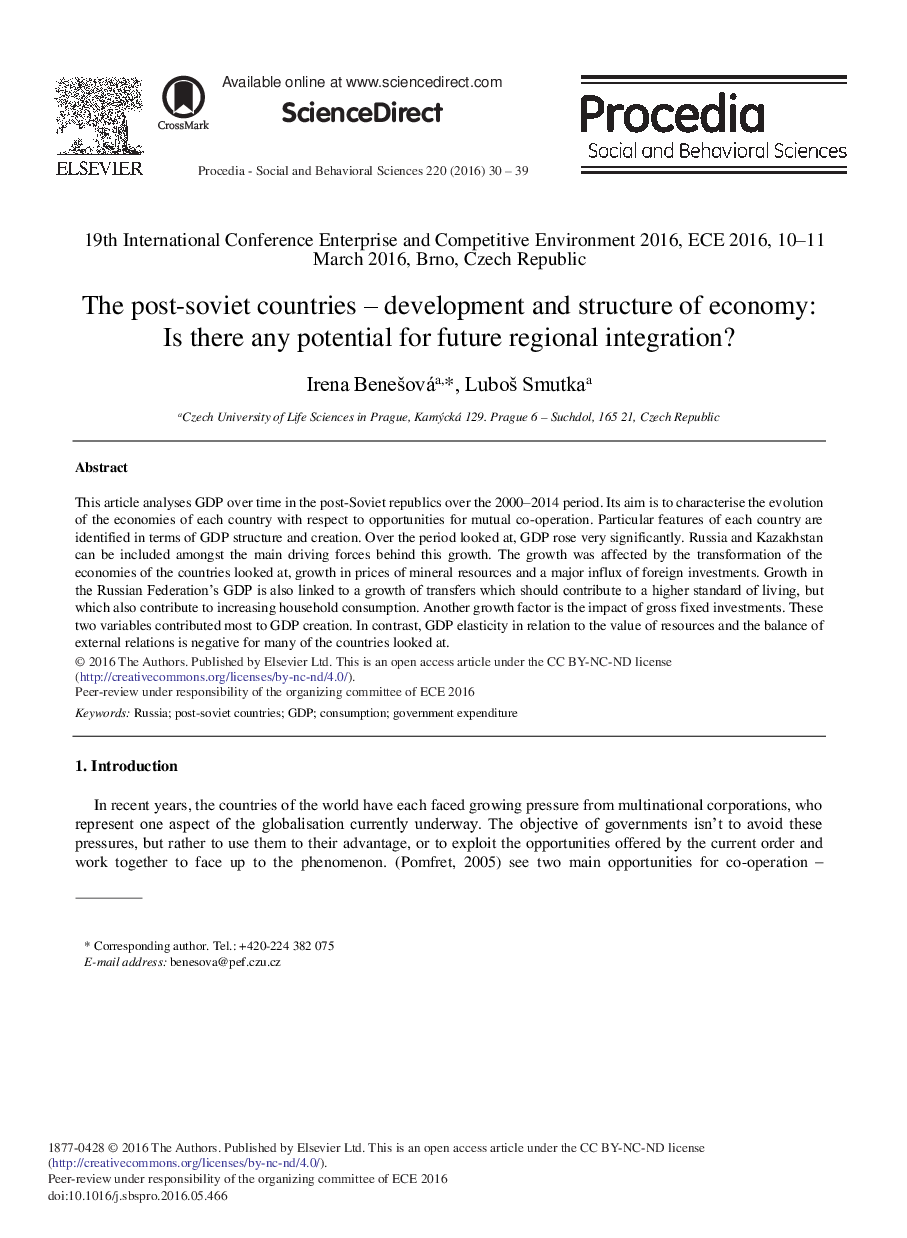| Article ID | Journal | Published Year | Pages | File Type |
|---|---|---|---|---|
| 1107215 | Procedia - Social and Behavioral Sciences | 2016 | 10 Pages |
This article analyses GDP over time in the post-Soviet republics over the 2000–2014 period. Its aim is to characterise the evolution of the economies of each country with respect to opportunities for mutual co-operation. Particular features of each country are identified in terms of GDP structure and creation. Over the period looked at, GDP rose very significantly. Russia and Kazakhstan can be included amongst the main driving forces behind this growth. The growth was affected by the transformation of the economies of the countries looked at, growth in prices of mineral resources and a major influx of foreign investments. Growth in the Russian Federation's GDP is also linked to a growth of transfers which should contribute to a higher standard of living, but which also contribute to increasing household consumption. Another growth factor is the impact of gross fixed investments. These two variables contributed most to GDP creation. In contrast, GDP elasticity in relation to the value of resources and the balance of external relations is negative for many of the countries looked at.
